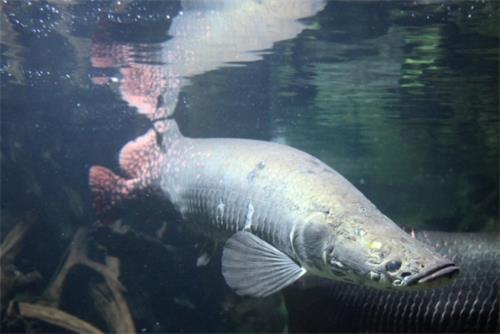
Fish, being aquatic organisms, predominantly rely on gills as their key respiratory structures to obtain oxygen from the surrounding water. Given their habitat in aquatic environments, it would appear, at least in theory, that they cannot experience the same kind of "drowning" phenomenon as land - dwelling animals. Nevertheless, a more in - depth analysis reveals that fish are, in fact, capable of suffocating due to water - related issues, which can ultimately lead to their demise. The question then arises: what are the specific circumstances under which fish can seemingly "drown" in the very element they call home?
What Does It Mean to Drown?
"Drowning" typically refers to water or another liquid submerging the respiratory tract and face, disrupting the organism's ability to breathe, and ultimately causing death. For mammals and other creatures that need to obtain oxygen from the air, drowning occurs when water enters the airways, preventing the exchange of air. This leads to oxygen deprivation. As the reflex to breathe intensifies, water enters the lungs, damaging the function of the alveolar surfactant, further impairing gas exchange. The lack of oxygen results in hypoxia, metabolic acidosis, and a series of physiological abnormalities, eventually leading to death.
How Do Fish Breathe?
Fish primarily breathe through gills. Their thin walls and rich network of capillaries provide a large surface area for gas exchange, ensuring fish can absorb enough oxygen from their environment. There are differences in gill structure and breathing methods between cartilaginous fish (like sharks) and bony fish (like goldfish). Cartilaginous fish rely on continuous water flow over their gills, where oxygen from the water is exchanged with the blood in their gill vessels. Bony fish, on the other hand, use the movement of their gill covers to regulate water flow, and their counter-current exchange system increases gas exchange efficiency.
Fish That Depend on Air
While most fish rely on gills to extract oxygen from water, some species have evolved the ability to obtain oxygen from the air in special environments. In oxygen-poor water, this fish uses its swim bladder (an evolutionary precursor to lungs) to breathe air. As this adaptation develops, the function of the gills diminishes, and eventually, up to 80% of its oxygen comes from the air. However, due to their heavy reliance on air, such fish must surface periodically to breathe, or they risk "drowning" from oxygen deprivation.
Oxygen Depletion in Water Causes Fish Suffocation
When water lacks sufficient oxygen, fish struggle to breathe properly, which can result in hypoxia or even death—a condition sometimes described as fish "drowning.When oxygen levels in the water drop too low, fish respiration becomes limited, leading to hypoxia. Certain natural events, like stagnant water in ponds before the rainy season or the accumulation of organic matter, can deplete oxygen levels in the water. Additionally, factors like rising water temperatures or changes in atmospheric pressure can affect dissolved oxygen levels, further threatening fish survival.
A more extreme scenario is the occurrence of "red tides." During a red tide, the increase in organic matter leads to a surge in aerobic microorganisms, which consume large amounts of dissolved oxygen from the water. This causes a sharp drop in oxygen levels, and fish in such environments may suffocate and die due to severe oxygen deficiency.
Fish Diseases and Respiratory Impairment
Aside from environmental factors, a fish's health can also affect its ability to breathe. For example, gill rot disease is a common condition where the gills become necrotic or congested, impairing respiratory function. Even if the water is rich in oxygen, fish suffering from this disease may find it difficult to breathe and eventually die from hypoxia. Other factors, such as parasitic infections or environmental pollution, can also lead to respiratory issues in fish.
Although fish live in water and water typically does not hinder their gas exchange, under certain environmental conditions or health issues, they may still face suffocation risks caused by water. Factors like oxygen depletion, disease, and extreme physiological adaptations can prevent fish from obtaining sufficient oxygen, leading to drowning-like scenarios. Therefore, from a biological perspective, fish drowning in water is not impossible—it is closely linked to environmental conditions and physiological adaptations.

Egypt’s Queen Cleopatra
Power and Desire: The Interwoven Fates of Egypt’s Queen Cleopatra
Cleopatra was the last Pharaoh of ancient Egypt, and her name has been forever linked to power, love, and choices.

Consanguineous Marriage
Why Is Consanguineous Marriage Not Allowed?
In genetics, consanguineous marriage refers to unions between direct blood relatives or collateral relatives within three generations.

Asexual Reproduction
The Mystery of Shark Virgin Birth: Unveiling the Secrets of Asexual Reproduction
Sharks have long fascinated biologists due to their unique and complex reproductive methods. However, an extraordinary event in 2001 at the Henry Doorly Zoo in Nebraska, USA, sparked widespread interest in the scientific community.


